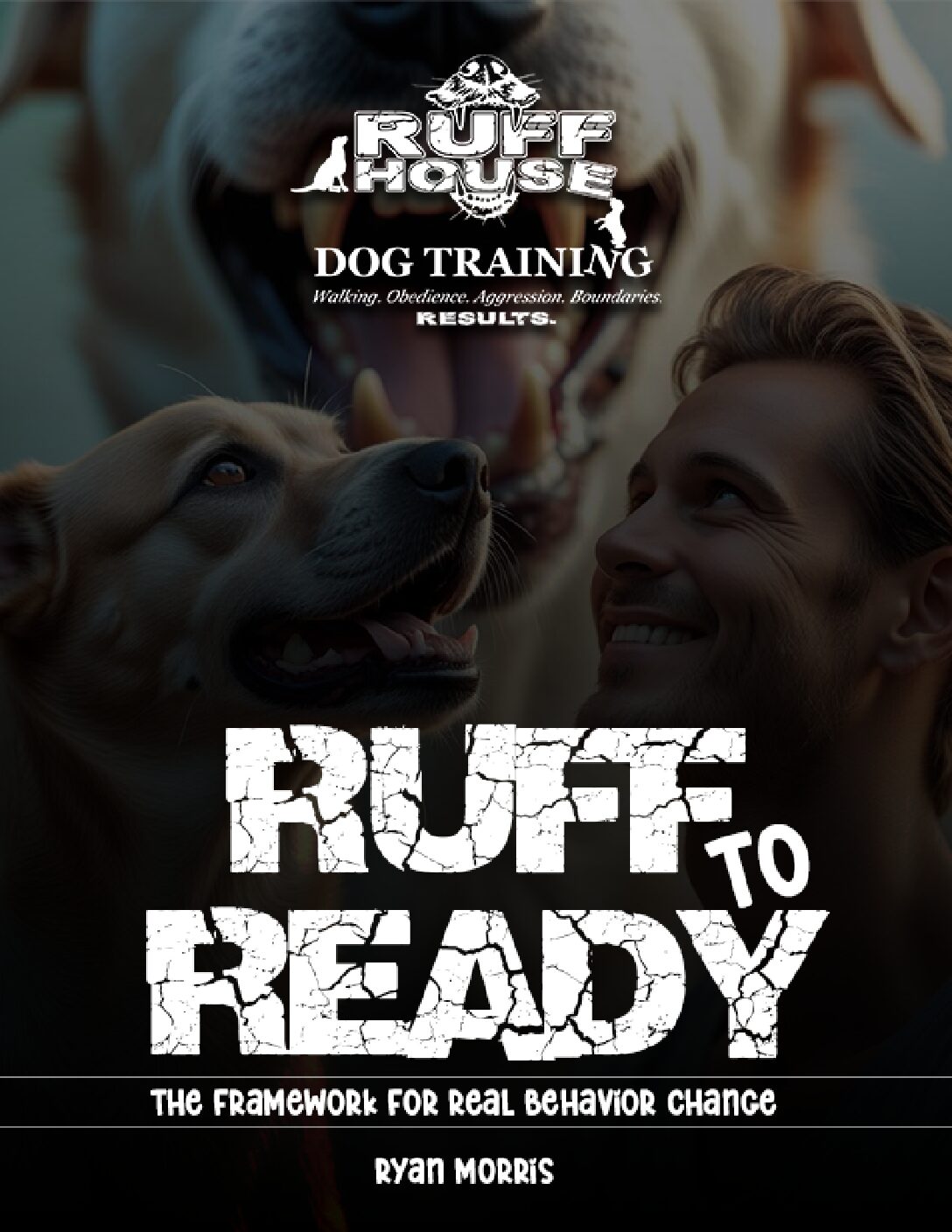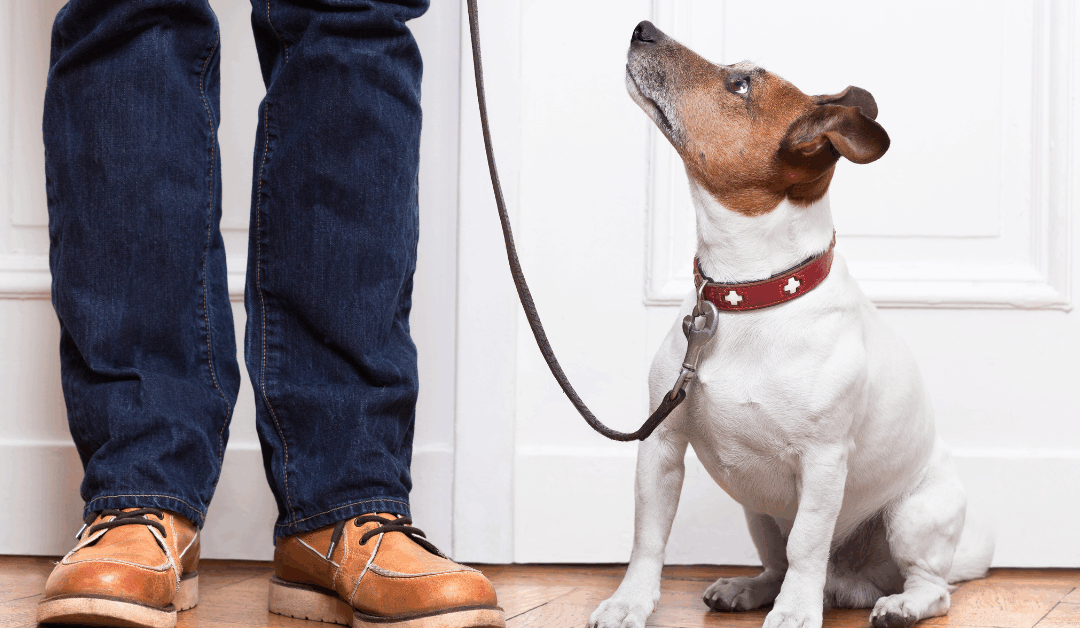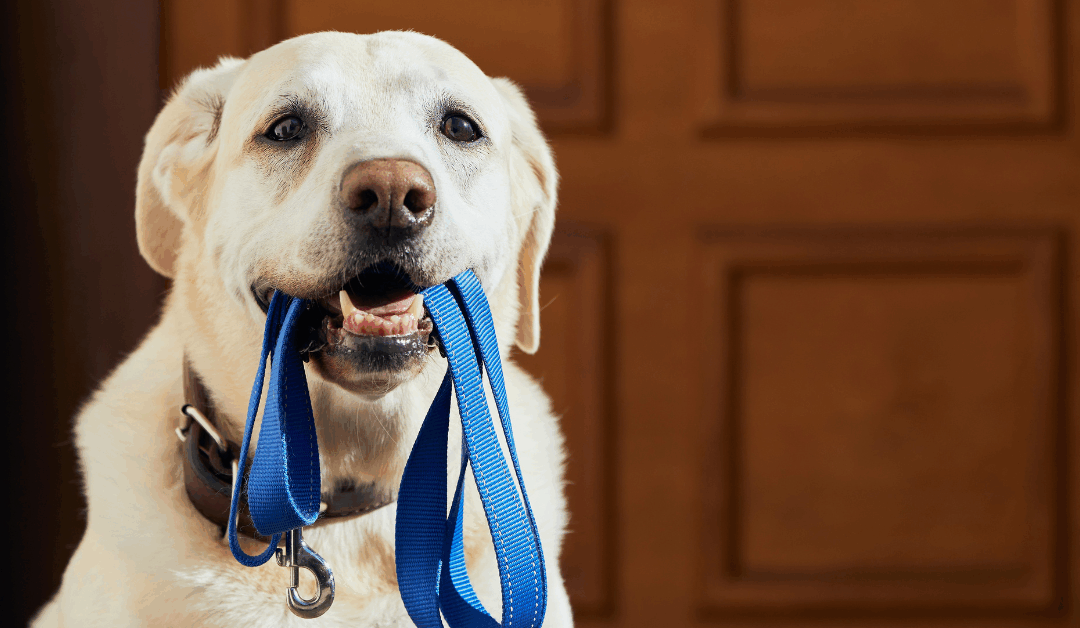If dogs came with instruction manuals, training would be a breeze. Unfortunately, they don’t. When your furry friend’s barking, biting, or bolting has reached breaking point, dog training collars often enter the conversation—along with plenty of controversy.
This isn’t about scare tactics or sales pitches. It’s about facts, safety, and real-world results that can transform your relationship with your pup.

Unlock Real Behavior Change – Download Your Free Guide Now
"*" indicates required fields
What Are Dog Training Collars Really?
Dog training collars come in several varieties, each designed for different behavioral needs and training situations:
Flat collars serve as basic identification holders and work well for well-behaved dogs who don’t pull.
Martingale collars tighten gently when your dog pulls. It allows you to provide some gentle pressure if the dog refuses to walk.
Bark collars automatically respond to excessive barking with corrections, helping address nuisance barking when you’re not around.
E collars (electronic training collars) offer the most versatility, featuring tone, vibration, and adjustable stimulation levels controlled by a remote.
Prong Collars, ultimately my go-to. These collars simulate their peers. The collar has teeth, as does Momma dog. It provides quick corrections that are best suited to prevent behaviors rather than react to them.
Prong Collars and Their Benefits
Prong collars, also known as pinch collars, are a training tool designed to help with leash training and behavior correction. These collars consist of a chain with pronged links that rest against the dog’s neck. When used properly, prong collars apply even pressure around the neck to mimic the natural correction a dog would feel in a pack, encouraging better leash manners and reducing pulling.
One major benefit of prong collars is their ability to provide a more controlled and gentle correction compared to other tools, as the pressure is distributed evenly rather than concentrated in one area. This ensures a safer experience for the dog while reinforcing desired behavior. Additionally, prong collars can be especially useful for larger or stronger dogs where other training methods may fall short.
It’s important to note that prong collars should only be used under the guidance of a professional trainer to ensure proper fit and application. When used responsibly, prong collars can be a valuable tool to achieve effective training and strengthen the communication between you and your pet.
Here’s the truth: no single “best dog training collar” exists. The right choice depends on your dog’s size, behavioral needs, learning style, and how they respond to different types of feedback. A small dog might respond beautifully to vibration alone, while a larger, more determined pup may need the shock feature at safe, low levels.

Photo by Viktor Talashuk on Unsplash
Myths vs. Truths About Training Collars For Your Furry Friend
Myth 1: “Dog Shock collars are cruel.”
Truth: Modern e collars are sophisticated training tools, not torture devices. Today’s collars offer tone and vibration options alongside adjustable stimulation levels that range from barely noticeable to attention-getting. Advanced models include customization options that let you find the precise level your dog needs—often far lower than you’d expect.
Myth 2: “Only bad owners use training collars.”
Truth: Professional dog trainers regularly use training collars as part of comprehensive programs that include positive reinforcement and punishment. When paired with treats, praise, and consistent training, collars become tools for clear communication rather than punishment.
Myth 3: “Collars solve all problems immediately.”
Truth: Training collars aren’t magic wands. They’re most effective as part of a structured training process that requires patience, consistency, and proper timing. The real game changer comes from understanding how to use feedback appropriately within your overall training program.
The Most Common Training Dog Collar Rules Explained
The 2-Finger Rule
Proper fit is crucial for both safety and training effectiveness. You should be able to slip two fingers between the collar and your dog’s neck size. Too tight restricts breathing and causes discomfort. Too loose allows the collar to shift, reducing contact and making corrections inconsistent.
The 3-Second Rule
Corrections or feedback must be delivered within three seconds of the unwanted behavior, or your dog won’t connect cause and effect. This rule applies whether you’re using vibration, tone, or shock collars. Delayed corrections confuse rather than teach, making timing absolutely critical for training effectiveness.
Vibration Collars vs. Shock Collars
The choice between vibration and shock features often depends on your dog’s sensitivity and the behavior you’re addressing.
Vibration collars work exceptionally well for small dogs and those who respond to gentle corrections. Many dogs find the vibration sufficiently attention-getting, making it perfect for recall training or stopping nuisance barking.
Shock collars, when used at appropriate levels, provide clearer communication for dogs who ignore other forms of correction. This doesn’t mean using high levels—most dogs respond to stimulation levels far lower than owners expect. The shock feature proves particularly valuable for off leash training and addressing behaviors that could put your dog in danger.
The key lies in starting with the lowest effective setting and using positive reinforcement alongside any correction. Many successful training programs begin with tone or vibration and only introduce minimal stimulation if needed. The effectiveness varies based on when you apply it. If the dog is in a heated exchange, you’ve already failed in preventing it, and neither the vibration nor the stimulation may be effective. Use these collars responsibly.
Best Practices for Using Training Collars Safely
Always pair with positive reinforcement. Combine collar corrections with treats, praise, and play to create balanced training experiences. The collar provides feedback about what not to do, while positive reinforcement shows your dog what you want instead.
Match the collar to your dog’s needs. Consider your dog’s behavioral needs, breed characteristics, and size when selecting training tools. A determined hunting breed might need different approaches than a sensitive small dog.
Start with the lowest effective setting. Begin with tone or vibration before progressing to stimulation. When using shock features, start at level 1 and increase gradually until you see your dog’s response.
Never leave a collar on 24/7. Give your dog’s neck and hair regular breaks from collar wear. Most training collars should only be used during active training sessions or specific problem-solving periods.
Work with knowledgeable trainers. Avoid cookie-cutter training advice. Professional guidance helps you use training collars effectively while avoiding common mistakes that can set back your dog’s progress.

Why Professional Training from Ruff House Dog Training Makes a Difference
Effective dog training extends far beyond choosing the right equipment. At Ruff House Dog Training, we understand that successful training combines the right tools with proven techniques and ongoing support.
Our approach focuses on real-world solutions rather than just commands. Whether you’re dealing with aggressive behavior, reactivity issues, or everyday obedience challenges, we design customized programs that fit your specific situation. Training collars may be part of the solution, but they’re never the whole answer.
What sets professional training apart is the unlimited support we provide. Unlike franchises or big-box trainers, our clients know they can reach out anytime for advice or troubleshooting—even after their program ends.
Frequently Asked Questions
What is the most effective dog training collar?
The most effective collar depends entirely on your dog’s individual needs, size, and behavioral challenges. E collars offer the most versatility with tone, vibration, and adjustable stimulation options, while martingale collars work well for basic leash training. I’m a fan of prong collars. They have collars for toy breeds as well as massive Boerboels. These require a little force but are extremely effective when utilized properly.
Prong Collars and Their Benefits
Prong collars, also known as pinch collars, are a training tool designed to help with leash training and behavior correction. These collars consist of a chain with pronged links that rest against the dog’s neck. When used properly, prong collars apply even pressure around the neck to mimic the natural correction a dog would feel in a pack, encouraging better leash manners and reducing pulling.
One major benefit of prong collars is their ability to provide a more controlled and gentle correction compared to other tools, as the pressure is distributed evenly rather than concentrated in one area. This ensures a safer experience for the dog while reinforcing desired behavior. Additionally, prong collars can be especially useful for larger or stronger dogs where other training methods may fall short.
It’s important to note that prong collars should only be used under the guidance of a professional trainer to ensure proper fit and application. When used responsibly, prong collars can be a valuable tool to achieve effective training and strengthen the communication between you and your pet.
What is the 2-finger dog collar rule?
You should be able to comfortably fit two fingers between the collar and your dog’s neck. This ensures proper fit for both safety and training effectiveness. If using an electronic collar, make sure the contacts are firmly in contact with the dog’s neck. I prefer on either the right or left side of the dog’s neck, ensuring that the contacts stay in contact with his neck, no matter which direction his head is.
What is the 3-second rule in dog training?
Corrections must be delivered within three seconds of unwanted behavior for your dog to make the connection between their action and the consequence. This timing rule is critical for effective communication.
Is a vibration collar better than a shock collar?
Neither is inherently better—it depends on your dog’s sensitivity and the behavior you’re addressing. Many dogs respond well to vibration alone, while others may need minimal stimulation for effective communication. Start with vibration and progress only if necessary.
Best Dog Training Collars
- SportDOG Brand 425X Remote Trainer
A versatile and durable e-collar designed for field training and hunting with a 500-yard range.
Buy it here - Petrainer PET998DRB Training Collar
An affordable and user-friendly option featuring static, vibration, and tone modes.
Buy it here - Educator E-Collar ET-300 Mini
Lightweight and ergonomic, this collar is ideal for small to medium-sized dogs with a ½-mile range.
Buy it here - Garmin Delta Sport XC Training Collar
Known for advanced features such as customizable levels and BarkLimiter technology.
Buy it here - Dogtra 1900S Handsfree Dog Training Collar
A professional-grade collar with a long range of ¾ miles and waterproof construction.
Buy it here - PatPet Dog Training Collar
A budget-friendly, rechargeable training collar offering effective sound, static, and vibration modes.
Buy it here - PetSafe Remote Trainer
Designed for pet parents, this collar offers gentle correction with user-friendly features and up to 300 yards of range.
Buy it here
Transform Chaos Into Calm
Dog training collars aren’t scary when you understand how to use them properly. They’re tools that, when used correctly, can restore peace in your home and strengthen the bond with your pup.
Whether you’re dealing with excessive barking, leash pulling, or more serious behavioral issues, the right approach and customer support team that combines appropriate tools with professional guidance and patience.
Ready to see real results? Schedule your 90-Minute Miracle session today. We’ll show you exactly how to use the right tools and techniques for lasting behavior change. No judgment—just real solutions that work.
From chaos to calm—let’s make it happen together.











